Photography tips for radio journalists
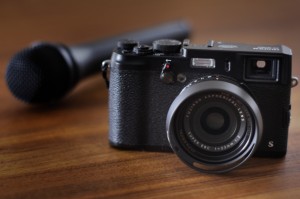 As a radio journalist you’re supposed to produce a story for the ears but your editor may also want you to produce an online version – a story for the eyes.
As a radio journalist you’re supposed to produce a story for the ears but your editor may also want you to produce an online version – a story for the eyes.
It’s a common scenario in newsrooms around the world as broadcast and online newsrooms merge. It means you need to quickly learn new visual storytelling skills in order to adapt your stories for online publication.
While you can find loads of online training resources to help you get started, basic camera skills are only going to take you so far. If you’re required to produce photographs that document the story you’re covering, say an editor is suggesting to bring back eight photographs for a story or picture gallery, then you also need to employ skills from photojournalism.
OnMedia’s Guy Degen offers some tips for radio journalists to help produce strong images for their stories.
What type of camera?
Hopefully your organization places as much emphasis on good photography as it does on good audio. However, I like to think that it’s skill that makes a good image rather than a good camera. So before you go upgrading your camera, go upgrade your skills.
Of course, using the right tool for the job does make a difference. If I have to collect audio and take photos for the same story, then I prefer a camera that is small(ish), turns on almost instantly and is easy to use in manual and auto mode. But most importantly, the camera must be quiet. This is because I like to be less observed and there are times when I need to record audio and take photographs simultaneously.
For many years, I used a fairly basic point-and-shoot camera when I was producing radio features – simply because it didn’t make the loud shutter noise of my DSLR. Later, a slightly more muscular, yet silent, Canon G10 offered the manual controls of a DSLR but in a small body. More recently, the near silent leaf shutter of the Fujifilm x100s has been my constant companion, and now the silent electronic shutter of the Panasonic GH4 (D)SLR will also be in my kit bag. I think even with a zoom lens the GH4 has a much smaller profile that a larger DSLR. It’s also great for shooting video.
Whatever camera you use, learn the essential functions. It’s just as important to know how your camera works as it is to know how your audio recorder functions. Knowing how your camera works will make you far more confident when you’re out covering a story.
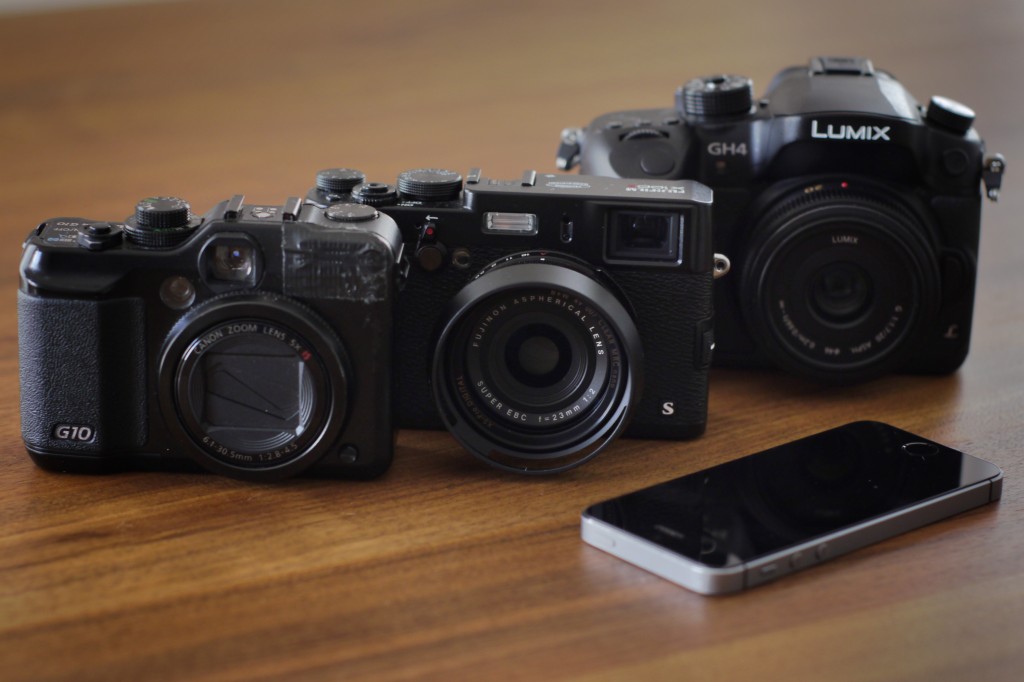
These days I also use my iPhone for taking photographs. Although the image quality is not as good my other cameras, it’s mostly fine for online publication. If you’re using a smartphone just be sure to use the silent mode or turn off any beeps or electronic shutter sounds.
The iPhone also has a neat trick of being able to record audio with an app running in the background and take photos at the same time – even in burst mode.
Planning is essential but keep your eyes open
Before going out to produce a radio feature, I usually write down a list of the interviewees (voices) I need to talk to and any potential ideas for sounds that might be interesting to record. Do the same for images. Write down a shot list of relevant people or locations or objects you need to photograph. As soon as I arrive on location, I walk around and get a feel for a place and add shots to my list.
In practice, I usually take photographs between recording audio. For example, if I record an interview with someone I’ll take a portrait shot of the interviewee immediately afterwards. But sometimes you need to plan a specific time for photography and a specific time for gathering audio. For instance, if you arrive at a location in the afternoon you might have to gather some shots quickly first to make use of available light.
But just as you would keep an ear open for interesting sounds to record, so too for photography – keep your eyes open to capture a moment.
What if you have to record and photograph at the same time?
I’ll be honest. Sometimes there might be a clash. Something visually interesting is happening at the same time as something essential to record. While reporting recently in Kiev, Ukraine, I wanted to record a group of old women singing in the Maidan square. They were so passionate and I knew it would make my story sound-rich. I also wanted to take photos as they were dressed in traditional costume, but I wasn’t sure how long they would sing for.
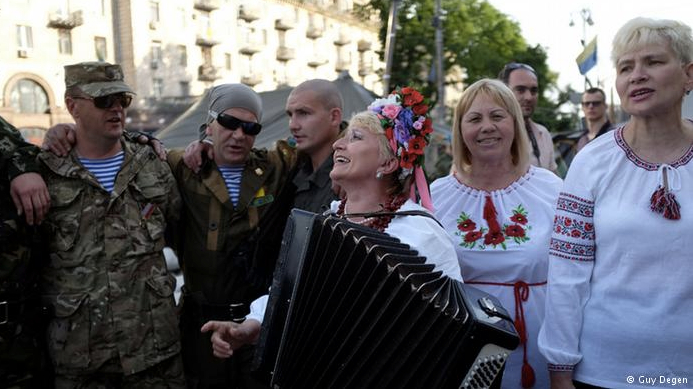 So to be safe, I began recording audio and taking photos at the same time – one hand holding a microphone, and the other hand snapping photos. It wasn’t ideal but sometimes it’s necessary. Once I had sufficient clean audio of singing, I put the microphone down and concentrated on getting better photos as the women were dancing with protesters.
So to be safe, I began recording audio and taking photos at the same time – one hand holding a microphone, and the other hand snapping photos. It wasn’t ideal but sometimes it’s necessary. Once I had sufficient clean audio of singing, I put the microphone down and concentrated on getting better photos as the women were dancing with protesters.
Variety of shots
Having worked a lot as a video journalist, it’s second nature for me to document a scene or an action in sequences of shots: wide shot, medium shot, close-up, etc. This is a good technique to borrow for photography too and it will force you to keep moving and looking for interesting angles. What you don’t want to do is come back with photos that are all wide, or only taken from one point of view.
For a story about a building powered by a bioreactor I made sure that I delivered a variety of shots of the building’s bioreactor façade and of the bioreactor process for the editor to select.
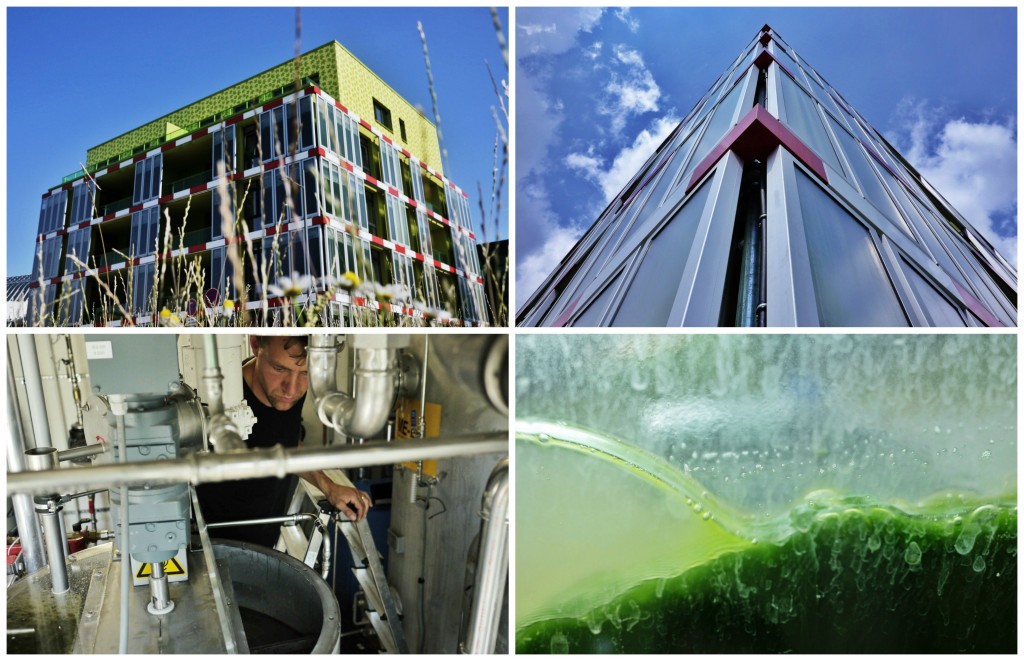
And when you’re documenting someone in action think about capturing both the action they are doing with their hands as well as the reaction of their face.
If you need to get in close, use your feet to “zoom”, rather than just relying on the zoom function of the camera.
Remember, most of the time your editor will want photos in “landscape mode” (horizontal) instead of “portrait mode” (vertical). Landscape mode photographs look better in an online photo gallery.
Don’t forget detail
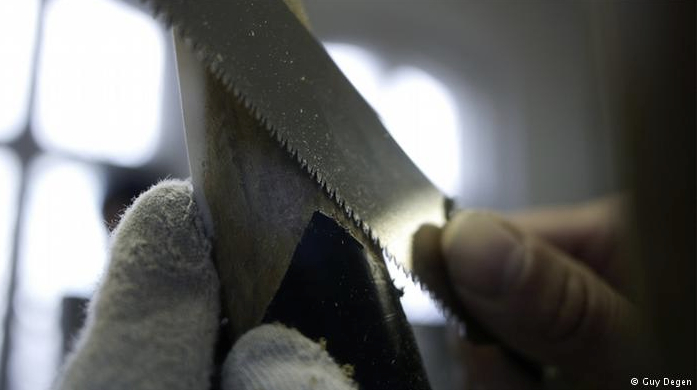 As much as a variety of shots is useful, don’t forget to look for fine detail – getting in close to show the audience what something looks like. There may even be a good reason to use the macro mode on your camera to get an extreme close up of an object.
As much as a variety of shots is useful, don’t forget to look for fine detail – getting in close to show the audience what something looks like. There may even be a good reason to use the macro mode on your camera to get an extreme close up of an object.
For a story on how people make bicycles from bamboo in Berlin, I made sure that I captured shots of fine carving the bamboo frame.
Get a good portrait shot
There’s nothing worse than recording a great interview and then walking away and forgetting to take a portrait shot of the interviewee. Good quotes in your story are going to work well with a good portrait shot. Whether it is a composed portrait or a shot of the interviewee doing something, I always make sure I have a shot of the people I talk to – even if I know it probably won’t get published.
Hopefully by the end of your radio interview, you’ve also made a connection with that person and established some rapport and trust. That’s also going to be reflected in how they react to you with the camera.
Keep it simple. Observing the rule of thirds is a good place to start for portraits. But be open to experiment. I usually try to take a portrait shot at the location of the story for context.
Below are portrait shots of a designer who has developed a new type of humanitarian shelter. I offered the editor two shots to choose from. A “classic” all purpose portrait and one that has the designer demonstrating a structural component he invented and described in detail in the story.
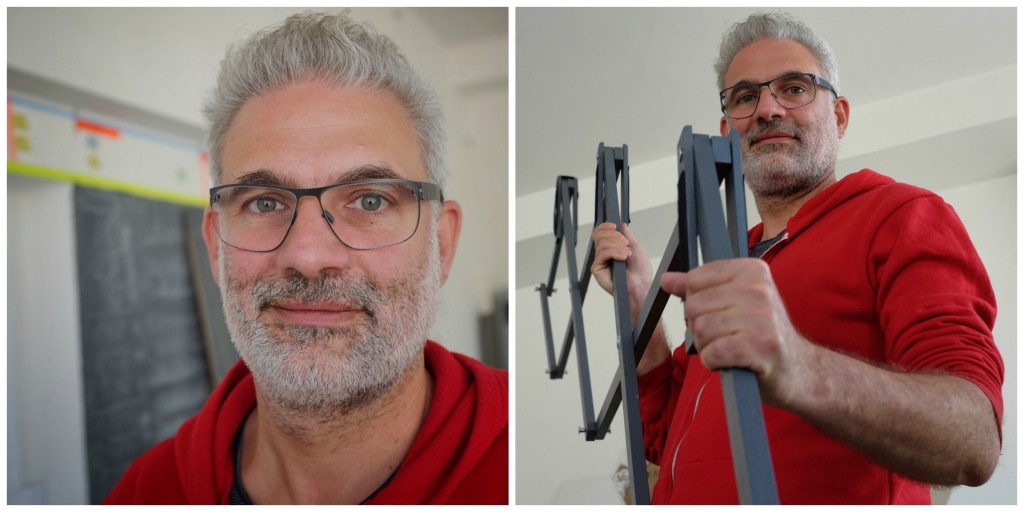
Practice, practice and practice
Some people have a remarkable eye for photography – they’re naturals. But like a lot of journalism skills, practice will improve your photography. You can turn a weakness into a strength. Always keep your camera with you to take photos. Make it an extension of your hand. Follow good photographers online and via social media. Borrow and adapt their ideas and shooting styles. If I had to choose just one website, a great starting point is Time’s Lightbox blog – it’s a fantastic online showcase of the best of photojournalism.



